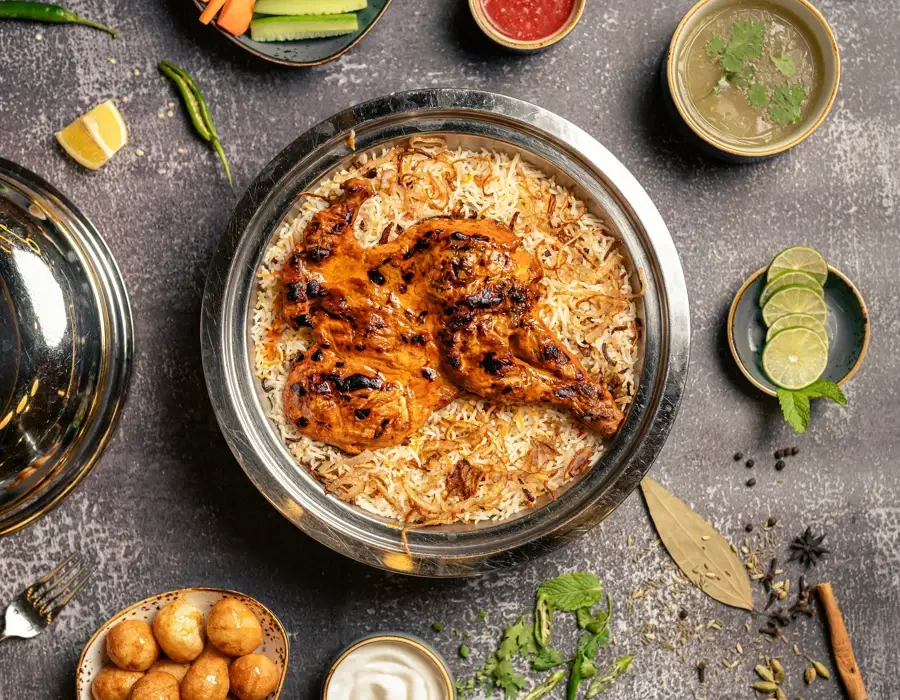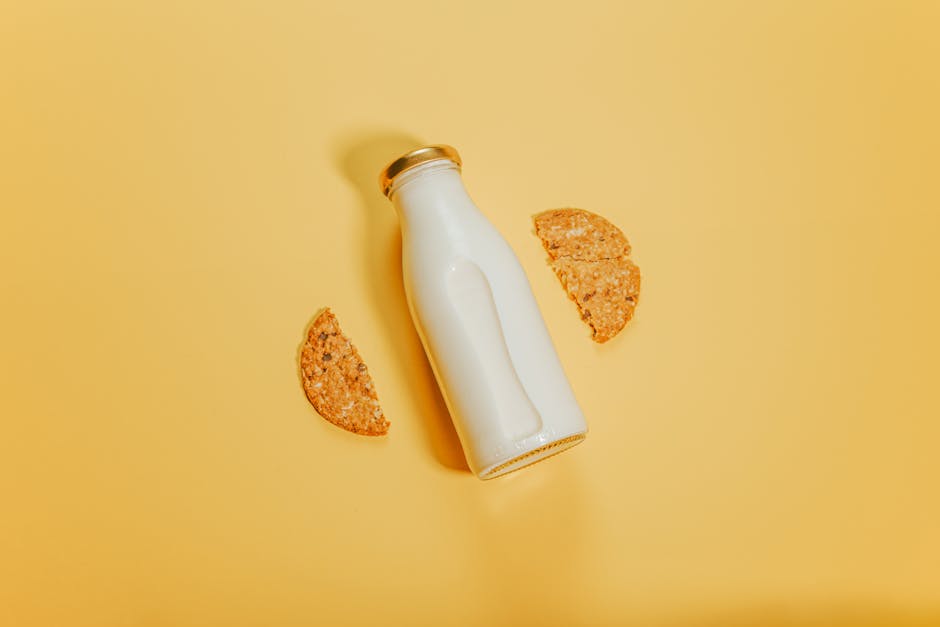Prepare yourself for a culinary journey to the vibrant streets of India, where the aroma of freshly fried samosas fills the air. Today, we’re diving into the art of making vegetable samosas, accompanied by a cooling and refreshing mint yogurt dip. Samosas, a beloved street food and snack across South Asia, boast a rich history stretching back centuries. While pinpointing their exact origin is difficult, many believe they originated in the Middle East, possibly in the Central Asian region, before making their way to the Indian subcontinent. Their evolution is a testament to the dynamic exchange of culinary traditions across diverse cultures.
The arrival of samosas in India is intertwined with the region’s historical and cultural tapestry. Some accounts suggest that they were introduced during the Mughal era, influencing the already existing Indian culinary landscape. Over time, samosas adapted to local tastes and ingredients, resulting in the incredible variety we see today. From the spicy potato and pea fillings prevalent in Northern India to the unique regional variations found across the country, the samosa’s journey reflects India’s diverse culinary heritage. It’s estimated that billions of samosas are consumed annually worldwide, underlining their immense popularity as a snack, appetizer, or even a light meal.
The cultural significance of samosas extends beyond their delicious taste. They are a staple at festivals, celebrations, and everyday gatherings across South Asia. Samosas are often sold by street vendors, becoming a symbol of everyday life and a source of livelihood for many. Their affordability and portability make them an accessible treat for people from all walks of life. More than just a food item, samosas represent community, sharing, and the joy of simple pleasures. Today, their global popularity continues to grow, with samosa variations appearing in diverse cuisines around the world, showcasing their adaptability and enduring appeal. This recipe focuses on a classic vegetable filling, but feel free to experiment with your favorite ingredients to create your own unique samosa experience!
The accompanying mint yogurt, or raita, provides a delightful counterpoint to the crispy, savory samosas. Its cool, refreshing nature perfectly balances the richness of the fried pastry. The mint’s refreshing aroma and the yogurt’s creamy texture create a harmonious blend of flavors and textures. This refreshing dip not only enhances the overall eating experience but also adds a touch of elegance to this otherwise humble street food. Get ready to embark on a culinary adventure, mastering the art of making delicious vegetable samosas and their perfect complement, the cooling mint yogurt.
Ingredients and Measurements
This recipe yields approximately 20 vegetable samosas. Accurate measurements are crucial for achieving the perfect samosa texture and flavor. Use a kitchen scale for the most precise results, especially for the flour and spices.
For the Samosa Pastry (Dough):
- 2 cups (250g) all-purpose flour (maida), plus extra for dusting. Using all-purpose flour ensures a good balance of elasticity and tenderness. Avoid using whole wheat flour as it can make the samosas tough.
- ½ teaspoon salt. This enhances the overall flavor of the pastry.
- ¾ cup (175ml) water, approximately. Add the water gradually; the amount needed may vary slightly depending on the flour’s absorption. The dough should be firm and pliable, not sticky.
- 2 tablespoons vegetable oil or ghee (clarified butter). Adding oil or ghee to the dough makes it more flaky and tender.
For the Vegetable Filling:
- 1 large onion, finely chopped (approximately 1 cup). Ensure the onion is finely chopped for even cooking and to prevent large chunks in the filling.
- 1 cup (150g) potatoes, peeled and diced into small cubes (approximately ½ inch). Using starchy potatoes like Russet or Idaho will give you a creamy filling.
- ½ cup (75g) green peas, fresh or frozen (thawed if frozen). Fresh peas are preferable, but frozen peas work well too.
- ¼ cup (30g) finely chopped carrots. The carrots add sweetness and color to the filling.
- 1 green chili, finely chopped (adjust to your spice preference). Use less chili if you prefer a milder samosa.
- 1 teaspoon ground cumin. Cumin is a key spice that lends an earthy aroma to the filling.
- ½ teaspoon ground coriander. Coriander adds warmth and complexity to the spice blend.
- ¼ teaspoon turmeric powder. Turmeric adds a subtle earthy flavor and vibrant yellow color.
- ¼ teaspoon garam masala. Garam masala provides a warm and aromatic blend of spices.
- ½ teaspoon red chili powder (adjust to your spice preference). Use less chili powder if you prefer a milder samosa.
- Salt to taste. Season the filling generously, as it will be cooked.
- 2 tablespoons vegetable oil or ghee. Use oil or ghee for sautéing the vegetables.
- 1 tablespoon chopped cilantro (coriander leaves), for garnish (optional).
For the Mint Yogurt (optional):
- 1 cup plain yogurt. Greek yogurt works well for a thicker consistency.
- ¼ cup finely chopped fresh mint leaves. Fresh mint is essential for the vibrant flavor.
- Juice of ½ lime. Lime juice adds a touch of acidity to balance the richness of the yogurt.
- Salt to taste.
Note: All measurements are approximate and can be adjusted to your preference. It’s always recommended to taste and adjust the seasoning throughout the cooking process.
Vegetable Preparation
The success of your vegetable samosas hinges significantly on the preparation of the filling. Properly prepared vegetables will ensure a flavorful and texturally pleasing samosa. We’ll be using a classic combination of potatoes, peas, and spices, but feel free to experiment with other vegetables like carrots, cauliflower, or sweet potatoes.
Begin by preparing 2 large potatoes (about 1 lb) and 1 cup of frozen peas. Peel the potatoes thoroughly and wash them under cold running water. Cut the potatoes into roughly 1-inch cubes to ensure even cooking. If using fresh peas, shell them and wash them thoroughly.
Next, we need to cook the potatoes. The best method is boiling. Place the cubed potatoes in a pot, cover them with ample cold water, and bring to a boil. Once boiling, reduce the heat to a simmer and cook until the potatoes are tender but not mushy. This usually takes about 15-20 minutes, depending on the size of the cubes. You should be able to easily pierce a potato cube with a fork. Once cooked, drain the potatoes well and set them aside to cool slightly.
While the potatoes are cooking, prepare the spices. In a small bowl, combine 1 teaspoon of ground cumin, 1/2 teaspoon of ground coriander, 1/4 teaspoon of turmeric powder, 1/4 teaspoon of red chili powder (adjust to your spice preference), and 1/2 teaspoon of garam masala. Ensure that all spices are finely ground for a smoother, more evenly distributed flavor in the filling.
Once the potatoes have cooled slightly, add them to a large bowl along with the frozen peas (or shelled fresh peas). Add the prepared spice mixture and 1/4 cup of finely chopped fresh cilantro. Gently mix all the ingredients together, taking care not to mash the potatoes excessively. We want the potatoes to retain some texture. Season with salt to taste (approximately 1/2 teaspoon, or more to preference).
Important Note: If using fresh peas, add them to the potatoes while they are still slightly warm. The heat from the potatoes will help to slightly cook the peas. However, avoid overcooking the peas, as they can become mushy.
Finally, taste the mixture and adjust the seasoning as needed. Some people prefer a tangier filling, so you might consider adding a squeeze of lemon juice or a splash of vinegar. Let the filling cool completely before using it to fill the samosa pastries. This step is crucial as a hot filling will make the pastry soggy.
With your vegetable filling prepared perfectly, you’re now ready to assemble your delicious vegetable samosas! Remember to follow the instructions carefully for the best results.
Dough Preparation
Making the perfect samosa dough is crucial for achieving crispy, flaky samosas. This recipe uses a simple yet effective all-purpose flour dough. The key is to use the right amount of water and knead the dough thoroughly to develop its gluten structure, resulting in a pliable and easy-to-work-with dough.
Ingredients for the Dough:
- 2 cups (250g) all-purpose flour (maida)
- 1/2 teaspoon salt
- 3/4 cup (180ml) lukewarm water (approximately, you may need slightly more or less)
- 1 tablespoon oil or ghee (clarified butter) – This adds richness and helps with flakiness
Instructions:
1. Combine Dry Ingredients: In a large mixing bowl, whisk together the all-purpose flour and salt. This ensures even distribution of salt throughout the dough.
2. Add Oil/Ghee: Add the oil or ghee to the flour mixture. Using your fingertips, rub the oil into the flour until the mixture resembles breadcrumbs. This step helps create layers in the dough, contributing to its flakiness after frying.
3. Gradually Add Water: Gradually add the lukewarm water, a little at a time, while mixing with a spoon or your hands. Avoid adding all the water at once. The amount of water needed might vary slightly depending on the humidity and type of flour. The dough should come together but still feel slightly firm.
4. Knead the Dough: Once the dough starts to form, turn it out onto a lightly floured surface and knead for 8-10 minutes. Kneading is essential; it develops the gluten in the flour, making the dough elastic and less likely to tear when rolling. The dough should become smooth and elastic. If it feels too sticky, add a little more flour, a teaspoon at a time. If it’s too dry, add a tiny amount of water.
5. Rest the Dough: Once kneaded, form the dough into a smooth ball, cover it with a damp cloth, and let it rest for at least 30 minutes. This resting period allows the gluten to relax, making the dough easier to roll out and preventing it from shrinking during cooking.
6. Preparing for Rolling: After resting, lightly knead the dough again for a minute or two to make it pliable. Now you’re ready to roll out the dough for your samosa pastries. Remember, a well-made dough is half the battle in creating delicious samosas!
Professional Tip: For extra flaky samosas, you can add a tablespoon of yogurt to the dough. The acidity of the yogurt helps tenderize the dough and enhance its texture.
Filling Preparation
The heart of a delicious samosa lies in its flavorful filling. This recipe utilizes a vibrant mix of potatoes, peas, and aromatic spices. Accurate measurements are crucial for achieving the perfect balance of flavors and texture. Begin by preparing 2 large potatoes (approximately 1 pound) and 1 cup of frozen peas.
Peel and dice the potatoes into roughly ½-inch cubes. Ensure the pieces are relatively uniform in size to guarantee even cooking. Place the diced potatoes in a large pot and cover them generously with cold water. Add a teaspoon of salt to the water; this helps the potatoes cook evenly and retain their shape. Bring the water to a rolling boil, then reduce the heat to a medium simmer. Cook for about 15-20 minutes, or until the potatoes are tender but not mushy. You should be able to easily pierce them with a fork.
While the potatoes are cooking, prepare the spice blend. In a small bowl, combine 1 teaspoon of ground cumin, ½ teaspoon of ground coriander, ¼ teaspoon of turmeric powder, ¼ teaspoon of red chili powder (adjust to your spice preference), and a pinch of garam masala. Freshly ground spices will yield the best flavor. If using pre-ground spices, ensure they are of high quality and aromatic.
Once the potatoes are cooked, drain them thoroughly. Excess water will make the filling soggy, so it’s important to remove as much liquid as possible. You can even gently press the potatoes with a clean spoon to extract any remaining moisture. Allow the potatoes to cool slightly before adding the spices.
In a large pan or wok, heat 2 tablespoons of vegetable oil over medium heat. Add the drained potatoes and the frozen peas. Sauté for about 5-7 minutes, stirring frequently, until the peas are heated through and the potatoes are lightly browned. Now, add the spice mixture to the pan and stir well to coat the potatoes and peas evenly. Cook for another 2-3 minutes, allowing the spices to bloom and infuse the filling with their aroma. Do not overcook the filling; it should be slightly moist but not dry or overly browned.
Finally, taste the filling and adjust the seasoning as needed. You might want to add a squeeze of lemon juice for extra brightness, or a pinch of salt if it needs more seasoning. Let the filling cool completely before using it to stuff the samosa pastries. Warm filling will make the pastry dough soggy and difficult to work with. Once cool, your flavorful samosa filling is ready to be assembled into crispy, golden-brown samosas.
Samosa Assembly: A Step-by-Step Guide
Assembling samosas requires a bit of practice, but with patience and these instructions, you’ll be creating perfectly crimped, golden-brown delights in no time. We’ll be working with 12 squares of prepared samosa pastry (approximately 4×4 inches). If your pastry is a different size, adjust the filling quantity accordingly.
Prepare your workspace: Lay out your pastry squares on a clean, lightly floured surface. This prevents sticking and makes handling easier. Have your prepared vegetable filling readily available in a bowl. A small bowl of water is also crucial for sealing the samosas.
Filling the Samosas: Place approximately 2-3 tablespoons of the vegetable filling onto the lower half of each pastry square. The amount will depend slightly on the size of your pastry squares; you want enough filling to create a plump samosa but not so much that it overflows during frying.
Folding Technique: This is where precision matters. Fold the pastry square in half diagonally, creating a triangle. Ensure the filling is completely enclosed. Press down firmly along the edges to create a good seal. Now, begin crimping the edges. There are several techniques; here’s a simple and effective one:
Crimping the Edges: Starting at one corner of the triangle, use your thumb and forefinger to pinch and fold the edges inward, creating small pleats. Work your way down the edge of the triangle, creating evenly spaced pleats. Maintain consistent pressure to ensure a tight seal, preventing the filling from leaking during frying. The final pleat should meet the first, creating a complete seal at the base of the samosa. Repeat this process for all 12 samosas.
Professional Tip: For extra-crispy samosas, use a fork to gently crimp the edges after your initial pleating. This creates a textured edge that crisps beautifully during frying.
Dealing with Excess Pastry: If you have any excess pastry after sealing, trim it neatly with a sharp knife. This improves the overall appearance of the samosa and prevents uneven cooking.
Resting the Samosas (Optional): Once all the samosas are assembled, you can let them rest for 15-20 minutes before frying. This allows the pastry to relax, reducing the chances of them opening up during cooking. However, this step is optional, and you can proceed directly to frying if you prefer.
Important Note: Do not overcrowd the pan when frying. Work in batches to ensure even cooking and a beautiful golden-brown color. Overcrowding will lower the oil temperature, resulting in greasy, undercooked samosas.
With practice, you’ll become adept at creating perfectly formed samosas. Don’t be discouraged if your first attempt isn’t perfect; keep practicing, and you’ll soon be mastering the art of samosa assembly!
Frying or Baking the Samosas
Once your samosas are meticulously crimped and sealed, you face a delicious decision: frying or baking? Both methods yield satisfying results, albeit with different textures and nutritional profiles. Let’s explore each option in detail.
Frying for that Classic Crisp: Deep frying is the traditional method, resulting in irresistibly crispy, golden-brown samosas. For optimal results, use a deep, heavy-bottomed pot or a wok. Fill it with approximately 3-4 cups of vegetable oil (or your preferred high-heat oil like canola or sunflower oil) to a depth of at least 3 inches. Heat the oil to 350°F (175°C). You can check the temperature using a deep-fry thermometer; this is crucial to ensure even cooking and prevent burning. Never overcrowd the pot; frying too many samosas at once will lower the oil temperature, resulting in soggy samosas. Fry in batches of 4-6 samosas, ensuring they are submerged in the oil. Fry for approximately 4-5 minutes per side, or until they are golden brown and crispy. Use a slotted spoon to remove the samosas and place them on a wire rack lined with paper towels to drain excess oil.
Baking for a Healthier Option: If you’re looking for a healthier alternative, baking is a great option. While you won’t achieve the same level of crispiness as with frying, baked samosas offer a lighter, less greasy treat. Preheat your oven to 400°F (200°C). Line a baking sheet with parchment paper to prevent sticking. Arrange the samosas in a single layer, leaving some space between each one for even baking. Brush the samosas lightly with oil before baking to enhance crispness. Bake for 20-25 minutes, flipping halfway through, until they are golden brown and cooked through. You may need to adjust baking time depending on your oven. A toothpick inserted into the thickest part should come out clean.
Tips for Success Regardless of Method:
- Proper Sealing is Key: Ensure your samosas are completely sealed to prevent leakage during cooking. Any open edges will allow filling to escape, leading to uneven cooking and a less appealing final product.
- Don’t Overfill: Overfilling will cause the samosas to burst during cooking. Aim for a generous but not overflowing amount of filling.
- Patience is a Virtue: Whether frying or baking, avoid rushing the process. Allow ample time for the samosas to cook thoroughly and achieve the desired color and texture.
- Oil Management (Frying): For frying, use a thermometer to maintain consistent oil temperature. If the oil starts smoking, it’s too hot; lower the heat. Dispose of used oil properly.
- Cooling and Serving: Allow the samosas to cool slightly before serving, as they will be very hot immediately after cooking. Serve hot with your homemade mint yogurt for the ultimate culinary experience.
Experiment and Find Your Preference: Ultimately, the best method depends on your personal preference and dietary needs. Try both frying and baking to determine which texture and taste you enjoy most. Enjoy your delicious homemade vegetable samosas!
Recommendations for Vegetable Samosas with Mint Yogurt
To elevate your Vegetable Samosa and Mint Yogurt experience, consider these recommendations. For optimal flavor and texture, it’s crucial to pay attention to both the preparation and serving aspects. Ensure your potatoes and peas are cooked perfectly – neither mushy nor crunchy – for the best samosa filling. Similarly, the mint yogurt should be well-chilled and have a vibrant, fresh flavor. A good quality yogurt is essential for this.
Serving Suggestions: Samosas are incredibly versatile. They can be served as appetizers, snacks, or even a light meal. For a more substantial meal, consider serving them with a side of chutney, such as tamarind chutney or cilantro chutney. The contrasting sweet and sour flavors of the chutneys complement the savory samosas beautifully. A simple salad of mixed greens with a light vinaigrette can also add a refreshing element to the meal.
Complementary Dishes: The combination of crispy samosas and cool mint yogurt is already a delight, but you can enhance your culinary experience by adding other dishes. Consider serving them alongside a comforting bowl of dal (lentil soup) or a flavorful vegetable curry. The rich flavors of these dishes will pair well with the lighter samosas and yogurt. For a complete Indian meal experience, consider adding some naan bread or roti to soak up the delicious flavors.
Storage Conditions: For the best quality, consume freshly made samosas immediately. However, if you have leftovers, store them properly. Allow the samosas to cool completely before storing them in an airtight container in the refrigerator. They will keep for up to 2 days in the refrigerator. To reheat them, you can either air fry, bake, or microwave them. Avoid over-reheating, as this can make them soggy. The mint yogurt should also be stored in an airtight container in the refrigerator and will last for up to 3 days.
Nutritional Information (Approximate per Samosa): The nutritional content will vary depending on the ingredients used and the size of the samosa. However, a typical vegetable samosa might contain approximately 200-250 calories. It’s a good source of carbohydrates from the potatoes and flour, and provides some protein and fiber from the vegetables. The nutritional value of the mint yogurt is relatively low in calories but provides a good source of protein and calcium. Please note that these are estimates, and accurate nutritional information requires specific ingredient measurements and a nutritional analysis.
Presentation Tips: Arrange the samosas attractively on a platter. Garnish with fresh cilantro or mint leaves for an added touch of freshness and visual appeal. Serve the mint yogurt in a small bowl alongside, allowing your guests to customize the amount they add to each samosa. A beautiful presentation enhances the overall dining experience.





